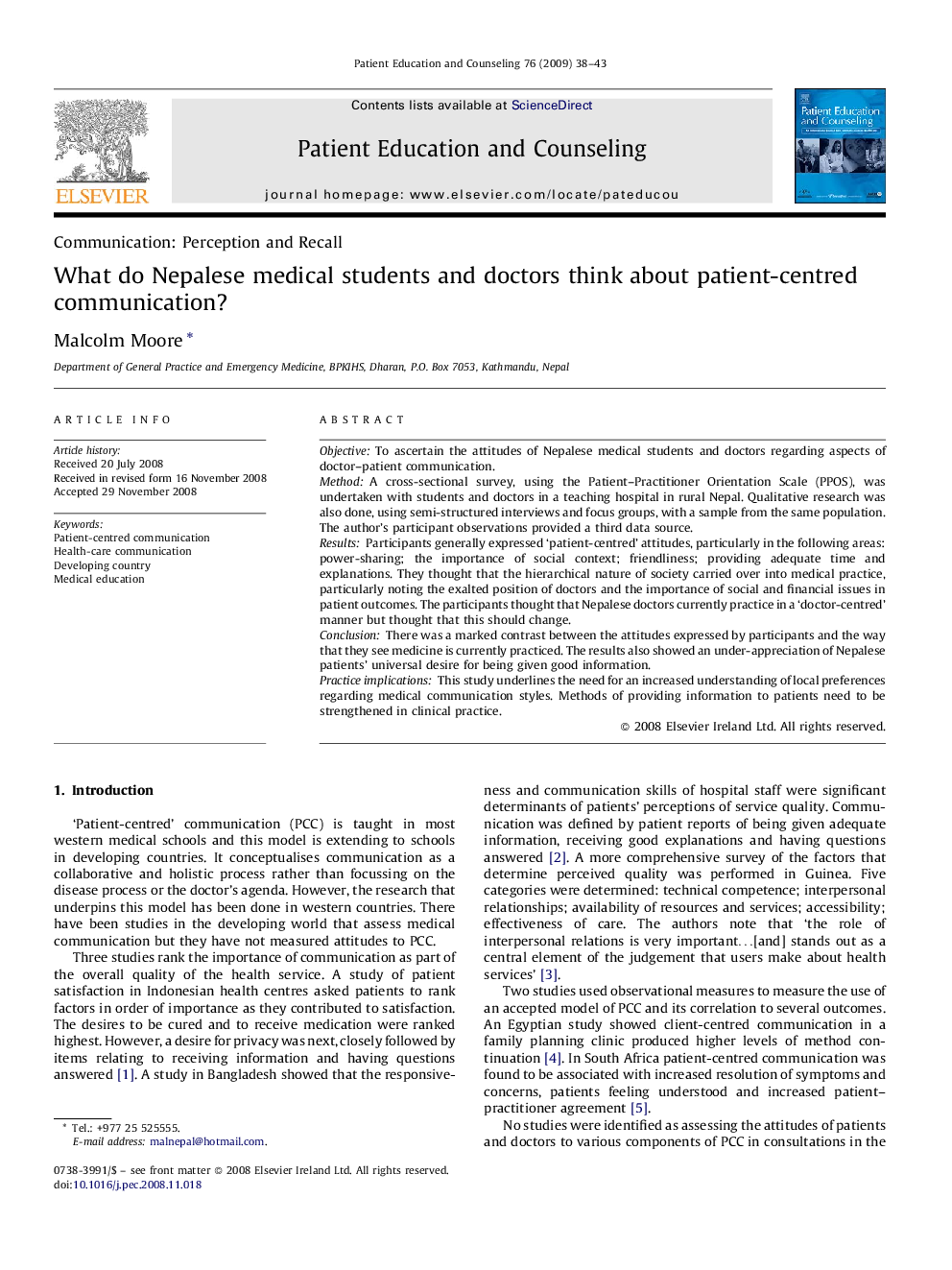| Article ID | Journal | Published Year | Pages | File Type |
|---|---|---|---|---|
| 3815116 | Patient Education and Counseling | 2009 | 6 Pages |
ObjectiveTo ascertain the attitudes of Nepalese medical students and doctors regarding aspects of doctor–patient communication.MethodA cross-sectional survey, using the Patient–Practitioner Orientation Scale (PPOS), was undertaken with students and doctors in a teaching hospital in rural Nepal. Qualitative research was also done, using semi-structured interviews and focus groups, with a sample from the same population. The author's participant observations provided a third data source.ResultsParticipants generally expressed ‘patient-centred’ attitudes, particularly in the following areas: power-sharing; the importance of social context; friendliness; providing adequate time and explanations. They thought that the hierarchical nature of society carried over into medical practice, particularly noting the exalted position of doctors and the importance of social and financial issues in patient outcomes. The participants thought that Nepalese doctors currently practice in a ‘doctor-centred’ manner but thought that this should change.ConclusionThere was a marked contrast between the attitudes expressed by participants and the way that they see medicine is currently practiced. The results also showed an under-appreciation of Nepalese patients’ universal desire for being given good information.Practice implicationsThis study underlines the need for an increased understanding of local preferences regarding medical communication styles. Methods of providing information to patients need to be strengthened in clinical practice.
